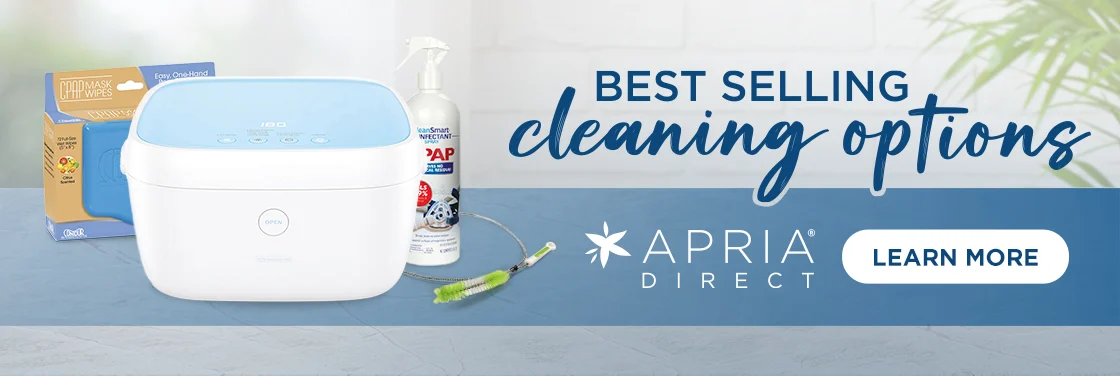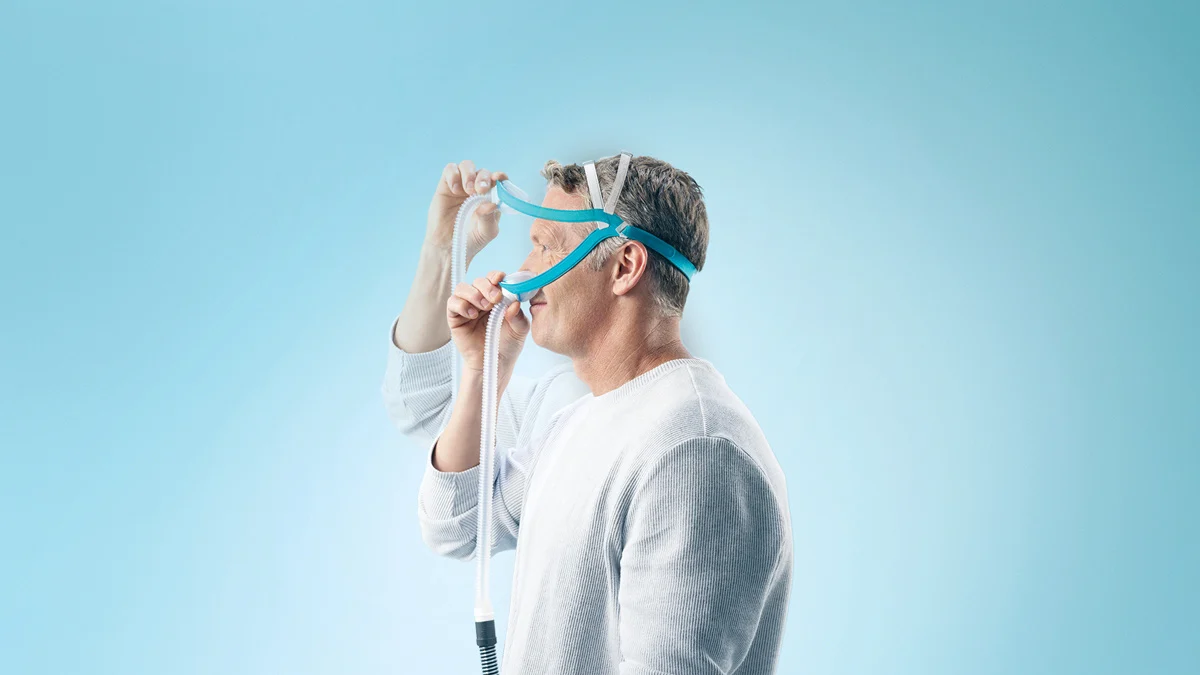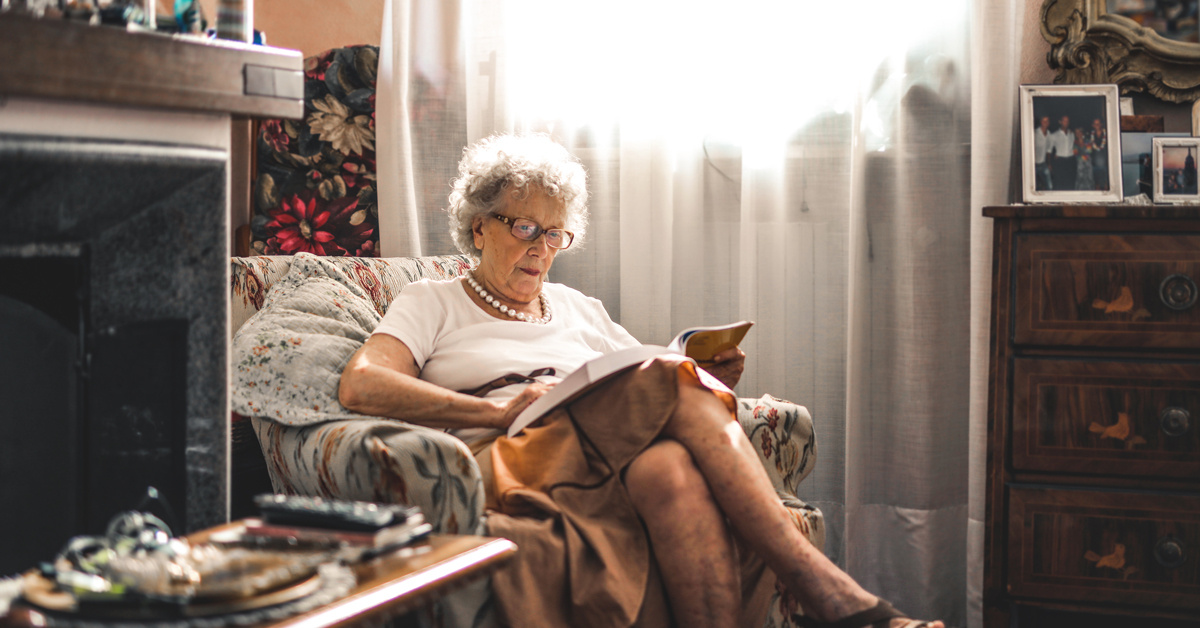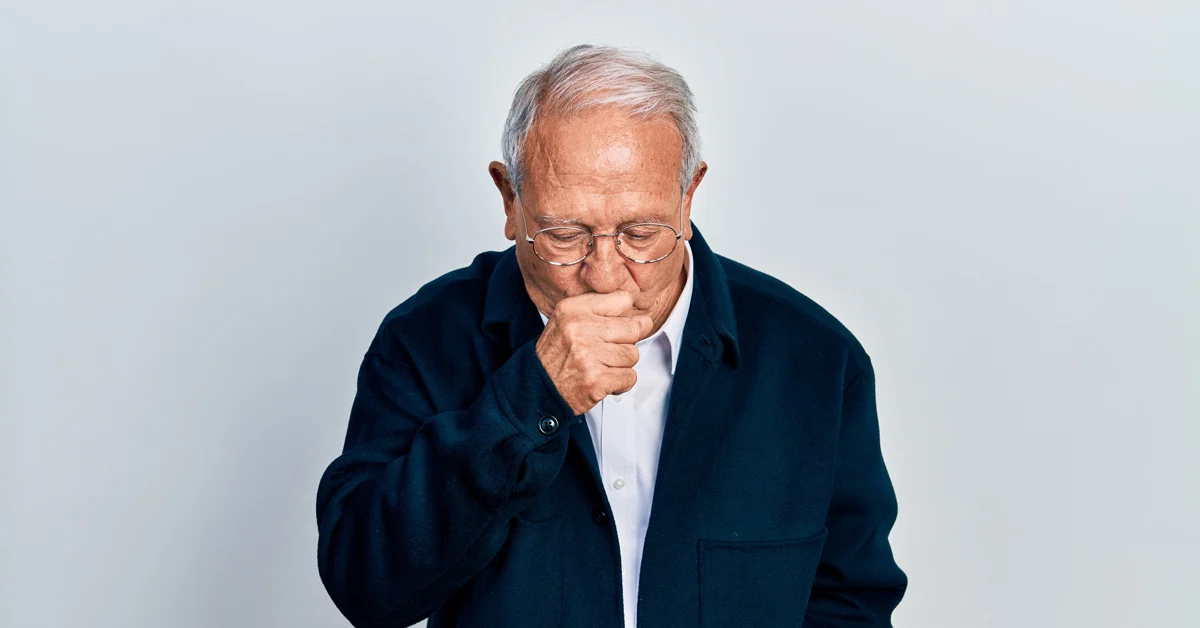Here Are Reasons Why—and What You Can Do About Them!
If you’re like many people with sleep apnea, CPAP (continuous positive airway pressure) therapy helps you sleep better at night so you can feel better during the day.
But for some, CPAP therapy just plain stinks. Literally, “stinks.”
Robert Miller, Apria Healthcare Vice President of Sleep Business, says, “Over time, it isn’t unusual for your CPAP machine and accessories to give off unpleasant odors.”
Here are the reasons why your CPAP device may smell funny—and what you can do about it.
1. Beware of Bacteria, Mildew, and Mold
CPAP machines are potentially breeding grounds for these pesky particles. That’s because CPAP machines use moisture and heat. Bacteria, mildew, and mold thrive in this kind of environment—whether it’s in your mask, filter, tubing, or water reservoir.
Breathing in these organisms can cause nasal infections, sore throats, a runny nose, watery eyes, sneezing, coughing, dizziness, headaches, and pneumonia-like symptoms. Any and all of these effects can make breathing difficult.
Signs of bacteria, mildew, and mold growth
If you notice the following, your CPAP machine may have bacteria, mildew, and mold growing on it:
- Your machine emits a foul, stale odor
- Your tubing or mask begins to discolor
- Your machine is dusty, which increases the chance of a mold colony forming
- Your skin becomes irritated
- Your sinuses feel congested
- You see black, red, or green mildew or mold on your machine
The solution
- Continually monitor your CPAP machine for any kind of bacteria, mildew, or mold growth
- Regularly clean your machine and all accessories—mask, tubing, reservoir—with mild soap and water
- Use distilled water in your reservoir; drain and dry it and the tubing every morning
- Replace the reservoir every 6 months
- Clean and replace filters as recommended by the manufacturer
Refer to our recommended replacement schedule to help keep track of when to replace the different parts of your CPAP device.
2. Clean or Replace Your CPAP Mask
It makes sense—if you use your CPAP every night, your mask is bound to get dirty. Because your mask touches your face, natural facial oils, bacteria, dirt, and dead skin cells collect on it.
The result: your mask begins to smell. Plus, a dirty mask can lead to leaks, which interferes with sleep, causes skin or eye irritation, and hampers the success of your CPAP therapy.
The solution
Here’s what you can do to reduce the harmful effects of a dirty mask:
- Thoroughly wash and dry your face every night before you go to bed. Lotions and makeup you use during the day can affect the integrity of the silicone used to produce masks.
- Clean your mask daily. Your mask has three parts: the cushion, headgear, and frame. Each should be removed and washed in mild soapy water and rinsed thoroughly. (Just be sure not to clean with harsh chemicals – see #5 below: “Make a clean break from certain cleaners.") Then let the parts completely air dry—preferably in a spot with little or no dust.
- Disinfect the cushion weekly by soaking it in a mixture of water and vinegar for 20 minutes, then rinse with distilled water.
- Replace mask cushions and pillows twice a month and your mask every 3 months.
3. Clean or Replace Your CPAP Filter
CPAP filters perform an extremely important job: they capture and trap any harmful particles before they enter your CPAP machine and, more importantly, your lungs, which can make you sick.
CPAP filters tend to get dirty rather quickly, especially if your environment has higher levels of dust, debris, microorganisms, and smoke. Adds Apria’s Robert Miller, “The dirtier the filter gets, the less effective it is. And the smellier it becomes.”
The solution
Depending on your CPAP machine, it may have both reusable filters and disposable filters.
- Reusable filters should be washed at least once a week, depending on how much pollen, dander, and dust they attract.
- To clean, rinse the filters under warm water, squeeze out excess water, then dry with a clean towel.
- Let the filters air dry before putting them back in your CPAP.
- Disposable filters should be replaced regularly according to the manufacturer’s instructions (often every few weeks).
4. Outlast Outgassing
New products often emit strong, sometimes pungent odors due to the materials used to produce them. This is often referred to as outgassing (or offgassing).
Think of a new car’s smell. That new pillow smell. Fresh paint. All a result of outgassing. And in all these cases, at first the smell is smelly. The same is true of some new CPAP machines.
The solution
Typically, the odor will lessen over time. Also, running your CPAP machine for a few hours during the day in a well-ventilated area may reduce the odor more quickly.
Contact your doctor or the CPAP machine manufacturer for other ways to decrease the smell.
5. Make a Clean Break from Certain Cleaners
Yes, it’s important to keep your CPAP device and accessories clean. But not all cleaners are appropriate. Some contain harsh chemicals that create a potent odor, leave a sticky residue on the surface of your equipment, and even damage your CPAP device.
The solution
Keep it simple: clean your CPAP device and accessories using warm water and mild, scent-free soap. Never use harsh household cleansers, such as dish detergents, alcohol, bleach, or antibacterial soap.
If you do and your device smells, let it air out. Chances are, the scent will eventually recede. To ensure the odor doesn’t return, thoroughly rinse your device and all accessories in water.
Also, devices claiming to clean CPAP machines using ozone or UV light haven’t been approved by the FDA, so avoid using them.
The Sweet Smell of Success!
The secret to keeping your CPAP device and accessories odor-free: clean them thoroughly and often. Remember, clean your CPAP mask daily and filters, tubing, and humidifier weekly. Apria’s Robert Miller advises, “Know the manufacturer’s recommendations for cleaning and replacement of your CPAP device and accessories, and follow them closely.”
You’ll soon be on the road to success. Sweet!
Sleep Better With Online Ordering
You can easily place a one-time order or you may qualify Supplies On Schedule, our sleep supplies subscription program. To make purchasing supplies easier to keep track of, we’ve broken down a recommended replacement schedule, but be aware that the frequency of replacements is governed by your insurance and may differ from the schedule provided.
References
1. Godman, H. (2019, October 8). Can your CPAP make you sick? Harvard Health Publishing. https://www.health.harvard.edu/blog/can-your-cpap-make-you-sick-2019100818005.
2. Peters, B. (Updated 2022, August 4). Solve Your CPAP Problems With These Tips. Verywell Health. https://www.verywellhealth.com/top-cpap-compliance-solutions-3015058.
3. How to clean your CPAP equipment. ResMed. https://www.resmed.com/en-us/sleep-apnea/cpap-parts-support/cleaning-cpap-equipment/.
4. Thierry, R. Breathing air from CPAP and humidifier that contains mold. Sleep Apnea Guide. https://www.sleep-apnea-guide.com/breathing-air-from-cpap-and-humidifier-that-contains-mold.html.
5. (2022, January 13). Can a Dirty CPAP make you sick? It can. But! PH Central. https://www.phcentral.org/can-cpap-make-you-sick/.
6. Mann, J. (updated 2022, March 12). The four commandments of CPAP equipment care. Sleep Junkies. https://sleepjunkies.com/cpap-equipment-care/.
LEGAL DISCLAIMER: Material in this newsletter is provided for general health education and informational purposes and to provide references to other resources only; it may not apply to you as an individual. While Apria Healthcare believes that the information provided through this communication is accurate and reliable, Apria Healthcare cannot and does not make any such guarantee. It is not intended to be a replacement for professional medical advice, evaluation, diagnosis, services or treatment (collectively, “medical treatment”). Please see your healthcare provider for medical treatment related to you and your specific health condition(s). Never disregard medical advice or delay seeking medical care because of something you have read on or accessed through this website. Reading this newsletter should not be construed to mean that you have a healthcare provider/patient relationship.


.png)



